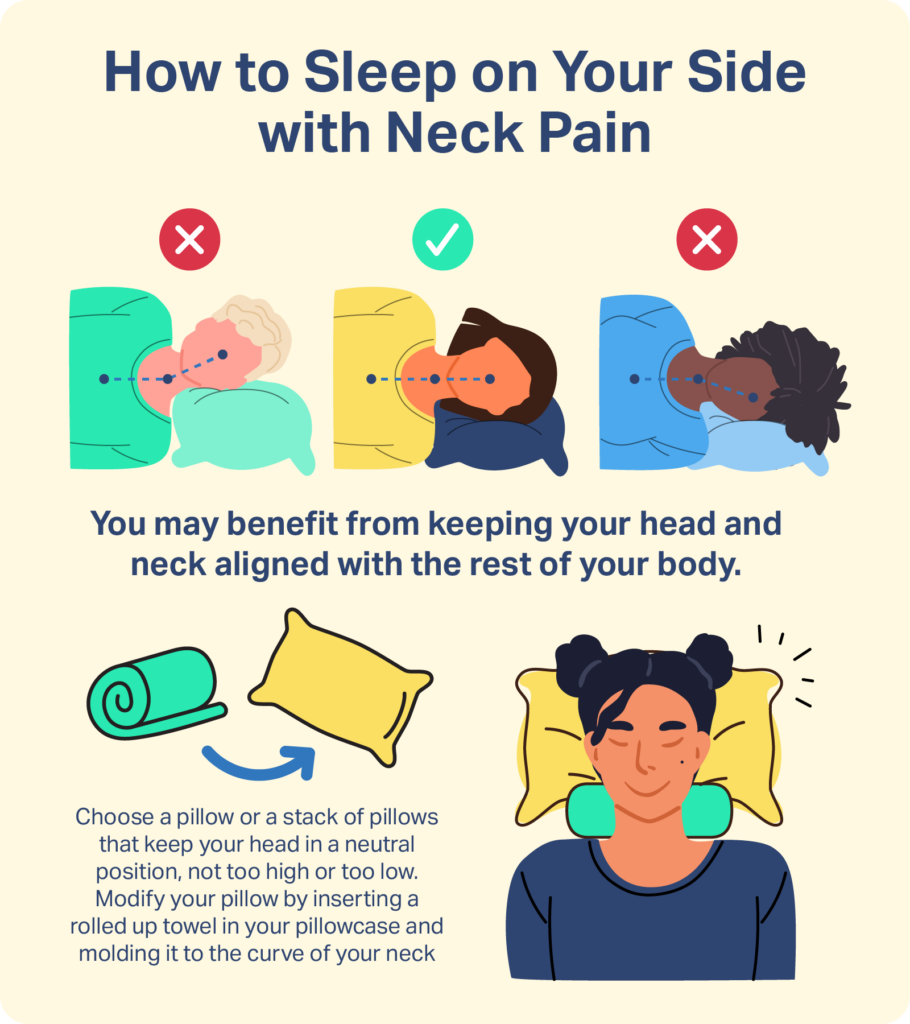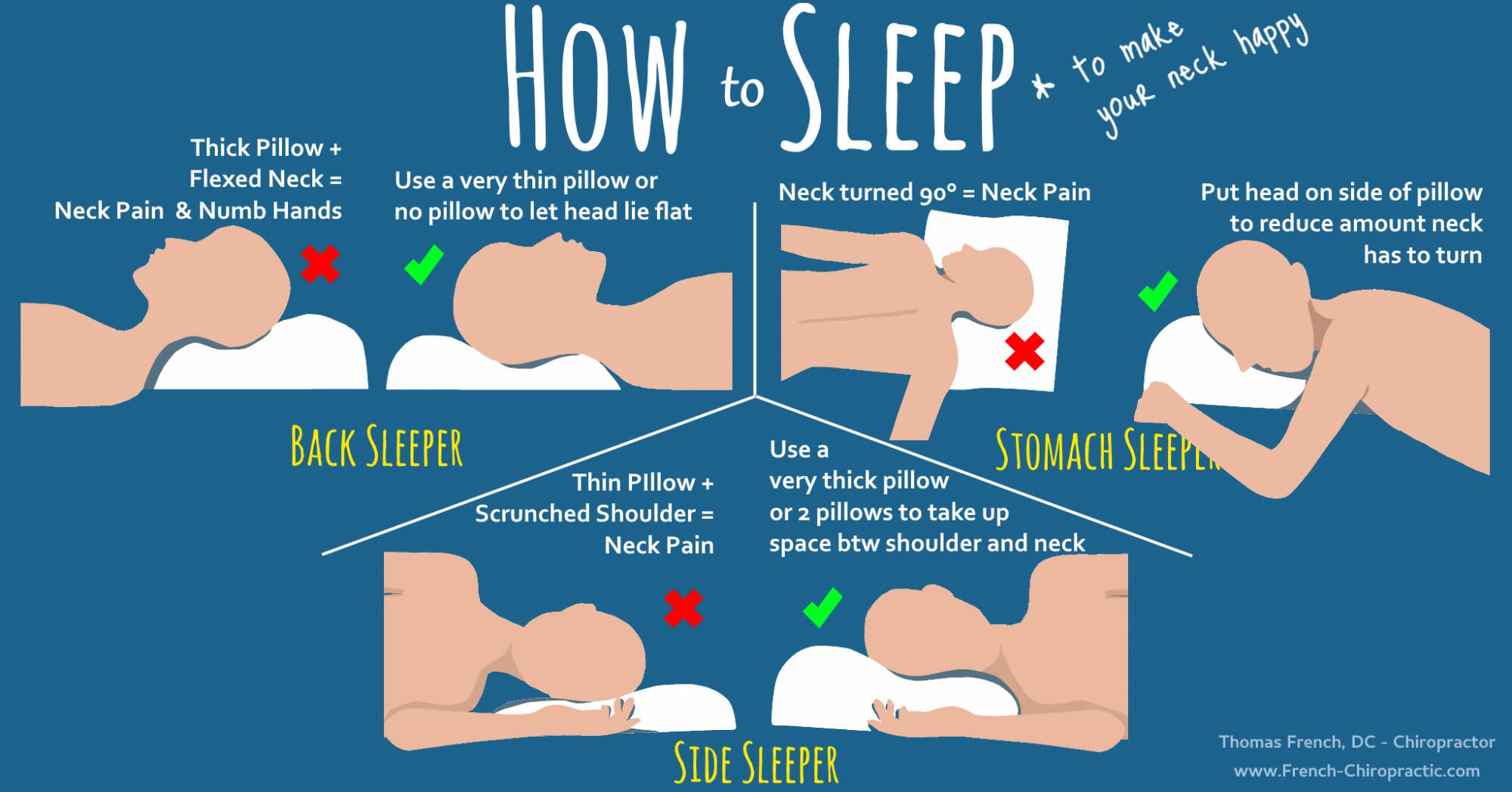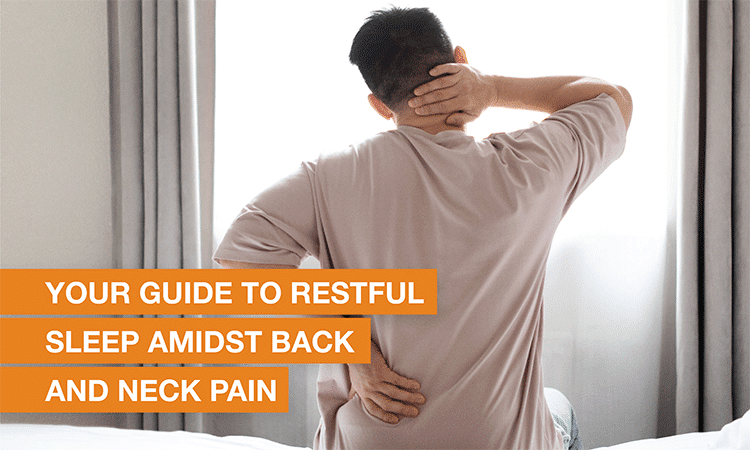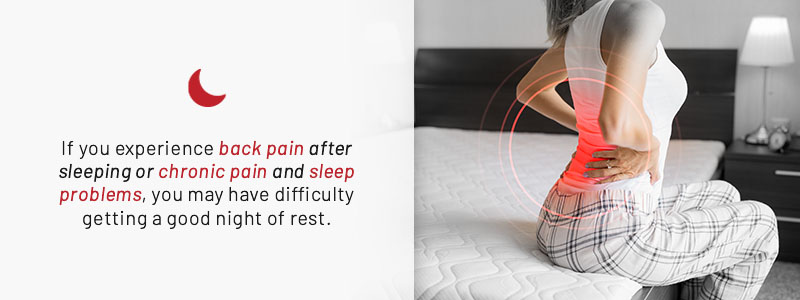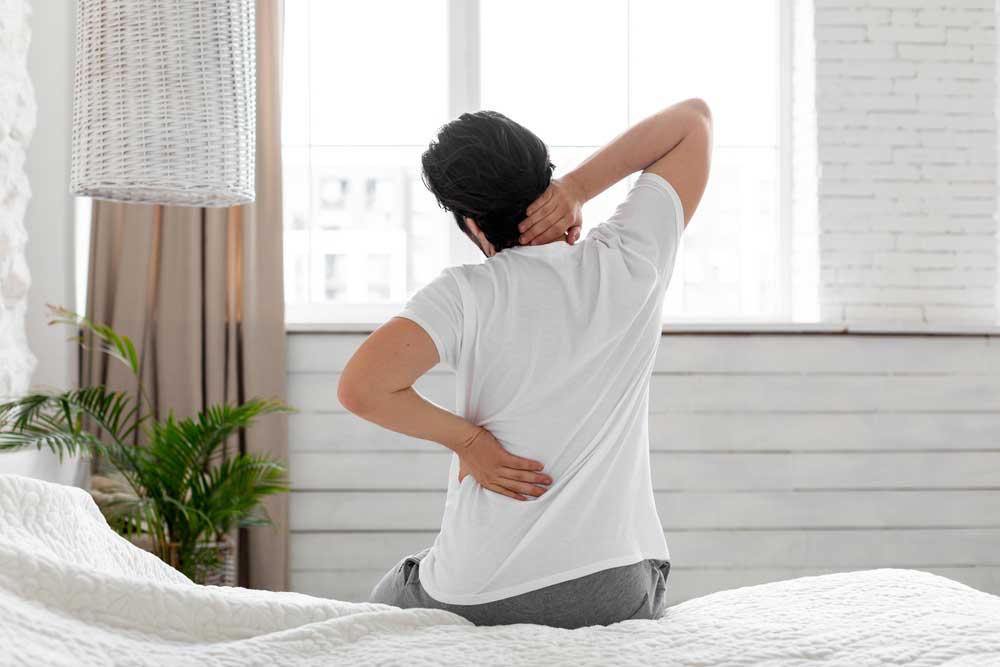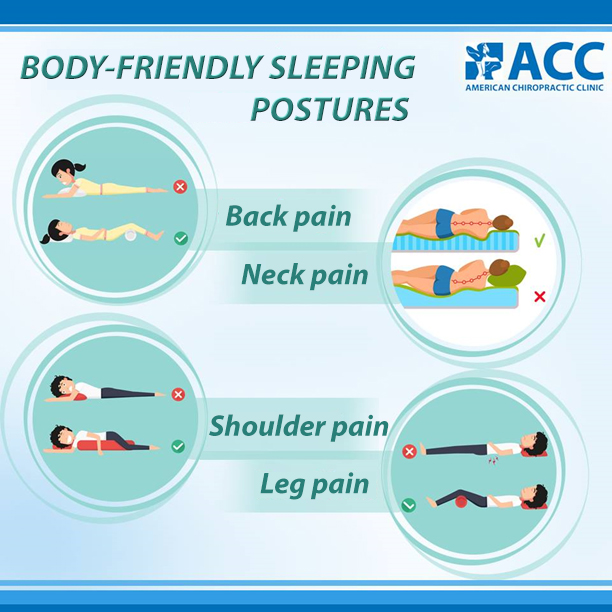Back And Neck Pain After Sleeping

The alarm blares, signaling the start of a new day. But instead of feeling refreshed, a sharp, throbbing pain shoots up the neck, or a dull ache settles in the lower back. This unwelcome morning ritual of back and neck pain is a far too common experience, impacting sleep quality and setting a negative tone for the hours ahead for millions.
The persistence of sleep-related back and neck pain is more than a minor inconvenience; it's a pervasive issue with significant implications for public health and economic productivity. This article will delve into the common causes of morning back and neck pain, drawing on expert opinions and scientific studies. It will explore preventive measures, effective treatment options, and the long-term consequences of ignoring this often-overlooked health concern. Understanding the root causes and adopting proactive strategies are critical for mitigating the impact of sleep-related discomfort and promoting overall well-being.
The Usual Suspects: Identifying the Culprits
Poor Sleep Posture: A Primary Offender
One of the most common contributors to morning back and neck pain is inadequate sleep posture. Spending hours in an unnatural or unsupported position can strain muscles and joints, leading to inflammation and discomfort.
Sleeping on the stomach, in particular, is often cited as problematic because it forces the head to be turned to one side, putting stress on the neck. According to the American Chiropractic Association, maintaining proper spinal alignment during sleep is crucial for minimizing strain.
Experts recommend sleeping on the back or side, with a pillow that adequately supports the natural curve of the neck.
Mattress Matters: The Foundation of Comfort
An unsuitable mattress can also play a significant role in exacerbating back and neck pain. A mattress that is too soft may not provide enough support, causing the spine to sag, while one that is too firm can create pressure points.
The National Sleep Foundation suggests that individuals choose a mattress that provides both comfort and support, allowing the spine to maintain its natural alignment. The ideal firmness level varies depending on individual preferences and sleeping position.
Consider that mattress life isn't forever. A worn-out mattress loses its support over time, often contributing to morning aches.
Pillow Problems: Head and Neck Support
Just as important as the mattress is the pillow. A pillow that is too thick or too thin can misalign the neck, leading to pain and stiffness.
The goal is to maintain a neutral spine by ensuring the head is neither tilted too far forward nor too far backward. Side sleepers often benefit from thicker pillows, while back sleepers typically require thinner ones.
Contour pillows, designed to cradle the neck and provide customized support, are also a popular choice for individuals with neck pain.
Underlying Medical Conditions: When to Seek Professional Help
While poor sleep posture and inadequate sleep equipment are often the primary causes, underlying medical conditions can also contribute to morning back and neck pain. Conditions such as arthritis, herniated discs, and fibromyalgia can manifest or worsen during sleep.
Dr. Michael Smith, a leading orthopedic surgeon, emphasizes the importance of seeking medical attention if pain is severe, persistent, or accompanied by other symptoms such as numbness, weakness, or tingling. These could be signs of a more serious problem requiring medical intervention.
Proper diagnosis and treatment by a qualified healthcare professional are essential for managing underlying conditions and alleviating pain.
Preventive Measures: Taking Control of Your Sleep Environment
Ergonomic Sleep Setup: Creating a Supportive Environment
Creating an ergonomic sleep environment is crucial for preventing back and neck pain. This involves carefully selecting a mattress and pillow that provide adequate support and aligning the spine.
Experimenting with different pillow types and sleeping positions can help identify the optimal setup for individual needs.
Consider using a body pillow for added support, especially for side sleepers. Ensuring the room is dark, quiet, and cool can also promote better sleep quality and reduce muscle tension.
Stretching and Exercise: Strengthening and Mobilizing
Regular stretching and exercise can help strengthen the muscles that support the back and neck, reducing the risk of pain. Gentle stretching before bed can release tension and improve flexibility.
Yoga and Pilates are particularly beneficial for improving posture and core strength, which are essential for maintaining proper spinal alignment. Consult with a physical therapist or certified instructor to learn safe and effective exercises.
However, avoid strenuous exercises close to bedtime, as they can interfere with sleep.
Lifestyle Modifications: Addressing Contributing Factors
Certain lifestyle factors can also contribute to back and neck pain. Maintaining a healthy weight reduces strain on the spine and joints. Practicing good posture throughout the day, especially while sitting at a desk, can prevent muscle imbalances and pain.
Managing stress through relaxation techniques such as meditation or deep breathing can reduce muscle tension and promote better sleep.
Quitting smoking is also beneficial, as nicotine can interfere with blood flow to the spine and delay healing.
Treatment Options: Finding Relief and Long-Term Solutions
Over-the-Counter Pain Relief: Temporary Comfort
Over-the-counter pain relievers, such as ibuprofen or acetaminophen, can provide temporary relief from mild to moderate back and neck pain. Topical creams and gels containing menthol or capsaicin can also help soothe sore muscles.
However, these medications should be used as directed and not as a long-term solution. Consult with a healthcare professional if pain persists or worsens despite over-the-counter treatments.
Long-term use of these medications can have side effects.
Physical Therapy: Restoring Function and Mobility
Physical therapy can be an effective treatment option for back and neck pain. A physical therapist can assess the underlying causes of pain and develop a personalized treatment plan to restore function and mobility.
Treatment may include exercises to strengthen and stretch muscles, manual therapy to mobilize joints, and modalities such as heat or ice to reduce pain and inflammation.
Physical therapists can also provide education on proper posture, body mechanics, and self-management techniques.
Alternative Therapies: Exploring Complementary Approaches
Some individuals find relief from back and neck pain through alternative therapies such as acupuncture, massage therapy, or chiropractic care. Acupuncture involves inserting thin needles into specific points on the body to stimulate energy flow and relieve pain. Massage therapy can help relax muscles and improve circulation. Chiropractic care focuses on aligning the spine and restoring proper joint function.
While these therapies may provide symptomatic relief, it is important to choose qualified and experienced practitioners and to discuss treatment options with a healthcare professional. The National Center for Complementary and Integrative Health (NCCIH) offers evidence-based information on various alternative therapies.
These approaches are often used in conjunction with conventional medical treatments.
Looking Ahead: Prioritizing Sleep Health for a Pain-Free Future
Addressing morning back and neck pain requires a comprehensive approach that considers sleep posture, sleep equipment, lifestyle factors, and underlying medical conditions. By adopting preventive measures, seeking appropriate treatment, and prioritizing sleep health, individuals can significantly reduce the impact of this common problem and improve their overall quality of life.
Continued research into the causes and treatments of sleep-related pain is essential for developing more effective interventions and promoting pain-free sleep for everyone. Public awareness campaigns can help educate individuals about the importance of proper sleep hygiene and early intervention.
Ultimately, proactive management and informed decision-making are key to unlocking a future free from the burden of morning aches and pains.
